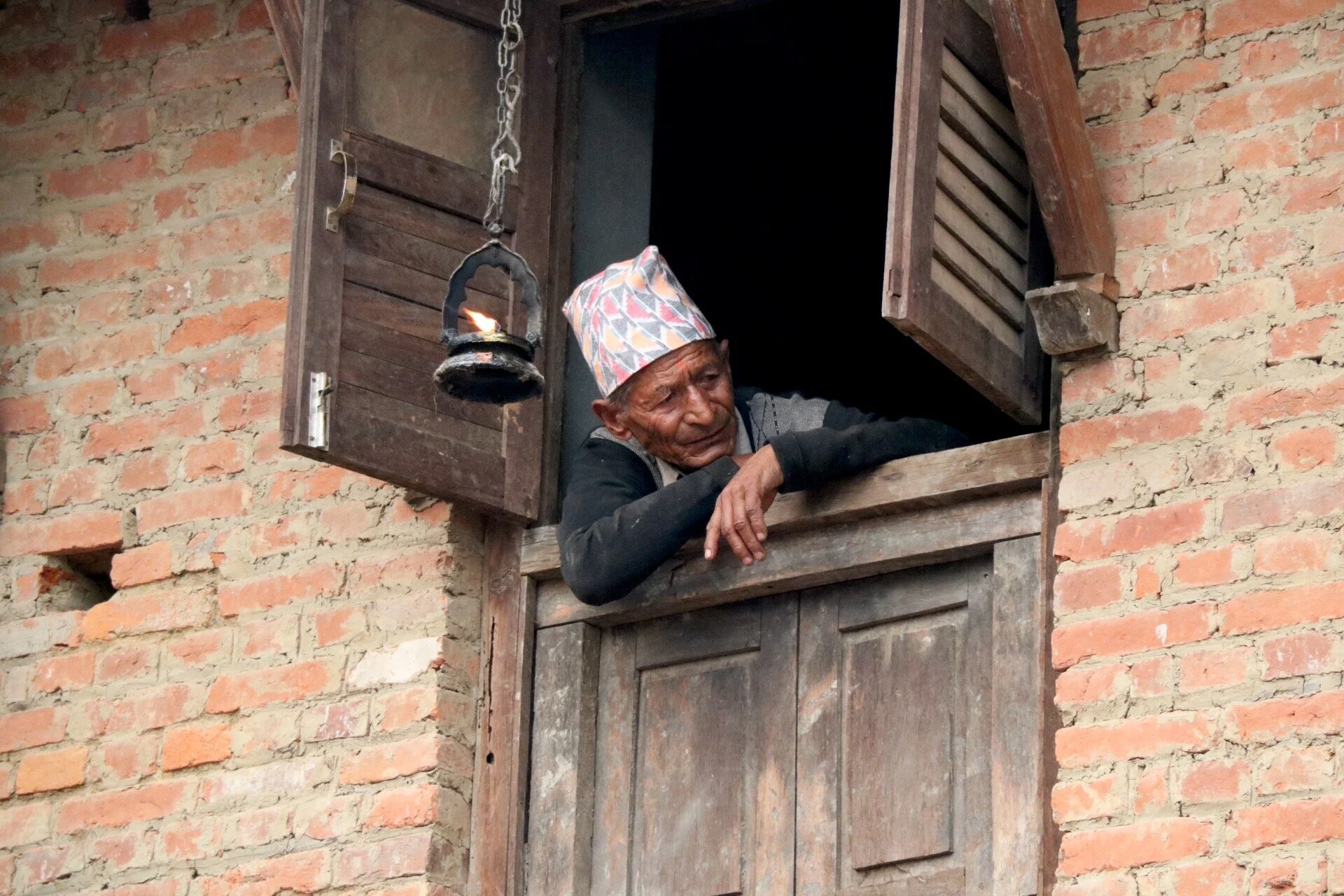
The chariot of Bisket Jatra
Each year around March or April, the town of Bhaktapur in Kathmandu, Nepal, hosts its annual Bisket Jatra festival.
For days leading up to the opening of the week-long event, a chariot is constructed in the main square of the ancient city, piece by piece. At the close of the festival, the chariot is dismantled and stored carefully for another year.
Here, local boys play on the half-finished chariot in the days before the festival.

Crowds gather in Bhaktapur
On the first day of Bisket Jatra, thousands of people crowd into Bhaktapur to see the chariot careen through the narrow streets, pulled by teams of local men.
It’s a spectacle for tourists and Nepali alike, who follow the chariot en masse from square to square over the course of a few hours.

When the momentum stops
The chariot’s journey begins at the uppermost square of Bhaktapur, and travels through narrow streets and alleyways downhill to the bottom square, propelled by a combination of gravity and manpower.
However, occasionally the chariot becomes stuck and its downhill momentum isn’t enough to keep it going. In these cases, teams of men on either side of it yank it from either end in turn until the large wheels begin rolling again and it carries on.

Correcting course
Here, the chariot conveniently lost its momentum halfway through a turn that would have sent it straight into a heritage building. The alleys and turns in ancient Bhaktapur are tight, and it’s not uncommon to see power lines yanked down or wooden decorative features swiped by the out-of-control chariot.
To send it down the right track, teams of men and volunteers from the crowd try to correct the chariot’s course by tugging on the trailing ropes.

It's easier in the audience
While the young men strain and heave to turn the chariot, older onlookers and tourists quite happily stand back to enjoy the spectacle.

An unwinnable tug of war
Controlling or correcting the chariot gives young men a great opportunity to test their strength, as if battling for a tug of war they’ll never win. Although some come away bruised and dirty, they’re safe from serious harm as long as they remain above the heavy chariot.

From a safe distance
A local Newari man looks down from his window at the crowds chasing the chariot through the streets.

On the sidelines
This young boy, proudly bearing the Nepali flag on his cheek, was closely minded by his older sister while they waited for the chariot to enter this final stage of its journey.
Spectators can easily be trampled or crushed below the chariot wheels if they are trapped in front of it. While many young men see it as an adrenalin rush - leaping to grab hold of it as it passes, or standing in front until the last minute in a game of chicken - not all of them come away successful.

The chariot re-emerges
After a painful negotiation through the final tight passages, the chariot emerges down the channel into the final square.
The men who’ve been pulling with all their might to encourage it to make the right turns will now have to leap clear or be struck by the dangerously careening chariot.

Clinging to safety
While two men stand joyously on the front prow of the Bisket Jatra chariot, others cling desperately to the bottom, knowing that if they let go they could be seriously injured.
The chariot is now moving at speed and increasing in pace as it follows a steady and open descent to the final square.

The young man's thrill
Meanwhile other young men try to leap onto the chariot from behind, excited by the rush of riding through the crowd and being in centre stage.

The final resting place
The chariot finally slows to a halt amid a sea of spectators, both foreign and Nepali. People have been crowding the rooftops and windows for hours, waiting to see this final moment when the chariot comes to rest at the end of its journey.

The journey's end
Now it’s stationary and safe to approach, the crowd surges to touch the chariot and receive blessing from the deity housed inside it. The chariot will remain here for some days until the next part of its journey through the streets begins again.












